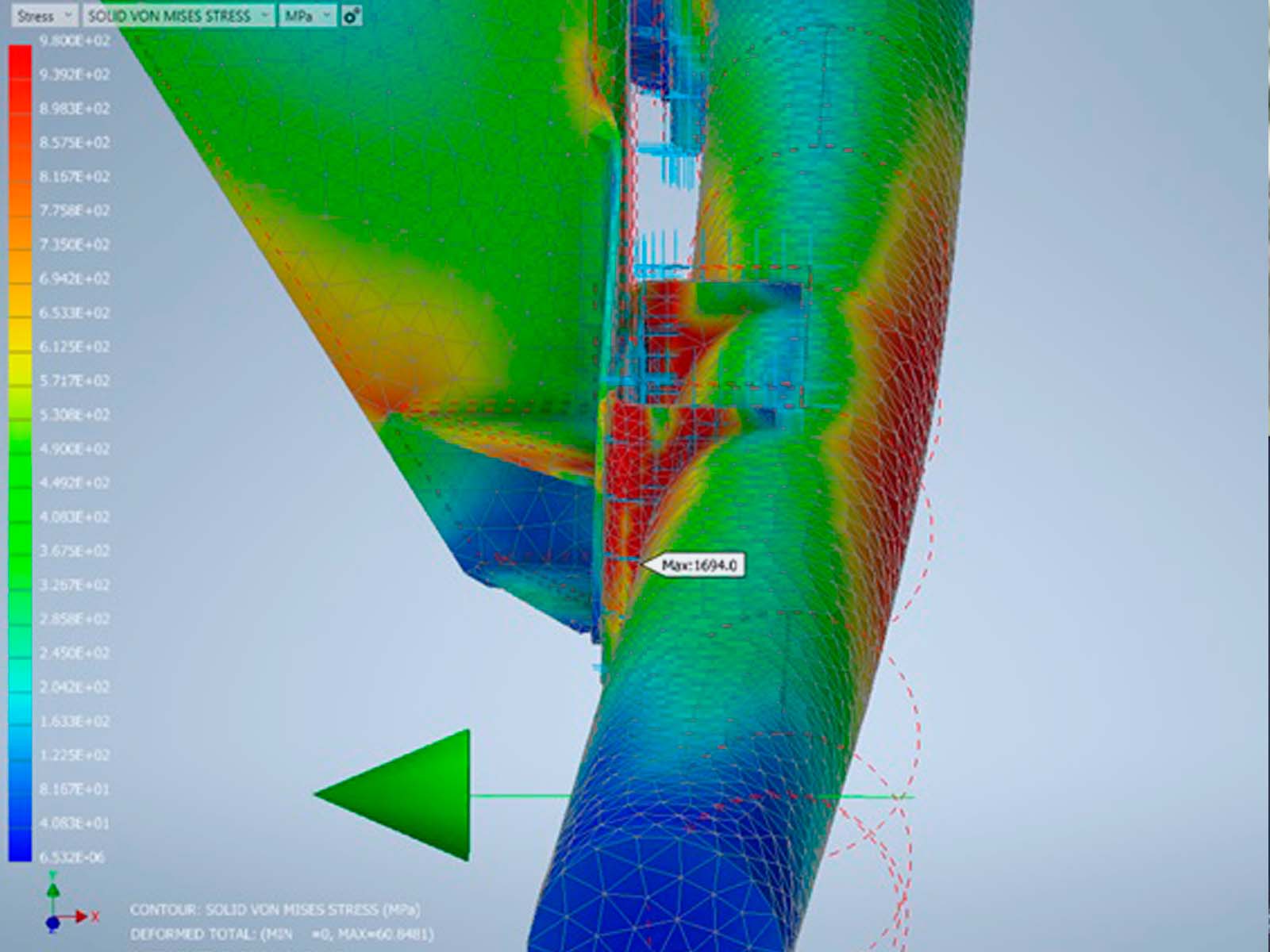Projects
Naval field
Up to now, the LNG bunkering capacity with the so-called bunkering system was limited to a bunkering capacity of 500 litres/minute with most systems. With the introduction of the improvements proposed by CIDIC, a bunkering capacity of up to 3,000 litres/minute was achieved.
Increased transport capacity
In order to increase the tank load and thus the profitability of bunkering, it was decided to reduce the internal pressure of the tanks, which led to a possible thinner tank body design. This reduction in thickness results in a reduction of the tank’s own weight, which according to ADR regulations could be increased by product. As the reduction of the internal pressure requires a pump for the liquid, each tank is equipped with one unit.
It is then, thanks to the system designed at CIDIC, that an increase in discharge flow rate of up to 1,100 litres/minute can be achieved.
Increased unloading capacity
In addition to the increased unloading capacity of the tanks thanks to the pumps, CIDIC has developed a modular unit that is able to combine the flow of 3 tanks discharging at full capacity in a highly optimised manner. This increase in capacity is quantified at a total of 3,000 litres/minute.
These technological improvements mean increased efficiency in LNG loading and logistics, which in turn means bringing benefits to LNG.
Ammonia dissociation plant
Hydrogen can be obtained from the ammonia molecule + an energetic contribution, since 17.8% of the weight of ammonia is hydrogen. Ammonia is a stable molecule, is less flammable than hydrogen and has a characteristic odour that warns of leaks, unlike hydrogen, which leaks and losses are not negligible.
The cost of storing and transporting ammonia compared to liquid hydrogen has been estimated to be 10 and 47 times cheaper respectively. These are some of the advantages of ammonia over hydrogen, which is why a green ammonia plant for hydrogen production is proposed.
Despite this, ammonia still presents some challenges, e.g. its green (emission-free) production is not yet well established. The price of green ammonia is estimated to be 50-100% more expensive than the current price of grey ammonia (800 €/tonne).
The thermo-catalytic process of ammonia decomposition is currently not efficient enough to be economically profitable on a small scale. PEM fuel cells, those used in vehicles, do not allow ammonia impurities in the hydrogen (<0.1 ppm). Hydrogen obtained from ammonia must be purified and small-scale purification is currently not economically viable.
Improved process
In order to bring an improvement in this process and bring a substantial advantage to this green energy, a modular hydrogenator with ammonia feedstock storage is proposed.
Main features
Its main features would be the production of 400 kg/day of H2 (including decomposition, separation and purification). H2 would be prepared for dispensing at 350 and 700 bar through diaphragm compression (without oil) or by electrochemical compression (compression + purification).
Tank vehicle optimisation
Currently, tank vehicle manufacturing uses welding as the primary joining method for most components.
This process offers excellent rigidity, durability and watertightness, but the complexity of the manufacturing process requires extensive execution and testing.
As for repairs, the disadvantages increase considerably in cost and insecurity.
The reason for this is that before any cutting or welding action is carried out on the body of the tanks, it must be ensured that they are safe by first cleaning the inner body.
Solving the problem
In order to solve or reduce this problem, the study of tanks is carried out using mechanical connections.
Other benefits
Other advantages sought in this optimisation project is the study of new materials in order to reduce the tare weight of the vehicle, achieving a greater capacity of product to be transported, making each transport more efficient.



